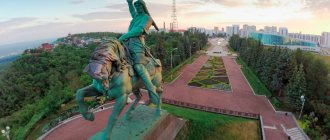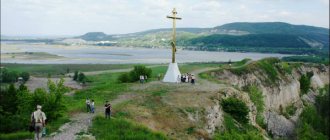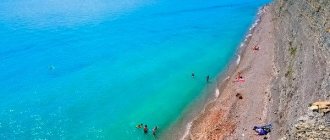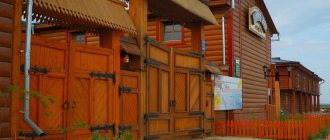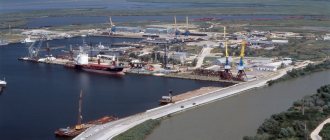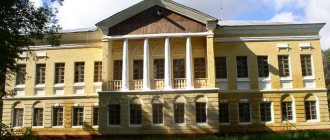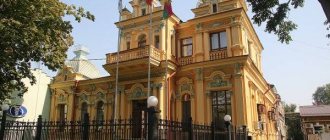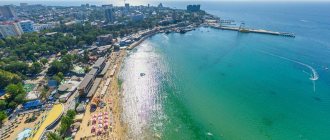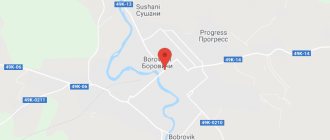Volgograd is a city on the Volga. One of the twelve cities whose military glory and whose military sacrifices are so great that these cities bear the title of hero city. Rebuilt after the Great Patriotic War, Volgograd is imbued with the memory of the Battle of Stalingrad, which unfolded here from July 1942 to February 1943. Tsaritsyn, Stalingrad, and now Volgograd - a city on the Volga. The sights of Volgograd are strictly military in nature when it comes to monuments, and only recently monuments not related to the events of the Battle of Stalingrad began to appear in the city.
We were given one day for a tour of Volgograd. During this day we managed to visit the Mamayev Kurgan memorial complex, see the Battle of Stalingrad panorama museum and walk around the city itself. The excursion to Mamayev Kurgan was of central importance in our hike, so we decided to start there. Plus, the climb to the memorial complex is located from east to west, so by visiting it in the first half of the day you will avoid the blinding sun. Article about Mamayev Kurgan.
Many tourists begin their acquaintance with Volgograd from the 62nd Army Embankment. There is a river station here, where tourists arrive on cruise ships. We arrived in the hero city by rail. Therefore, our acquaintance with the city of military glory began from its railway station. The building itself, like almost everything in Volgograd, was built after the war in 1954.
Excursion around Volgograd
In 2013, a replica of the famous Barmaley fountain was installed on the station square. But unlike the original fountain, the figures of the children have grown significantly longer. During Soviet times, this was a standard fountain installed in many cities. He became famous thanks to a series of photographs taken by photojournalist Emmanuel Noevich Evzerikhin after an air raid on August 23, 1942. The photographs clearly show the contrast between the destroyed and burning city and the carefree child figures on the fountain.
We begin our movement from Station Square to the main transport of Volgograd - the High Speed Tram. It will be convenient for us to navigate between all the attractions that we planned to see. So, from Station Square we go down Gogol Street and find ourselves in a large square. If we go down, we will get to the Square of Fallen Fighters, but we decided to leave this attraction for the end of the walk. To our right is a monument to Alexander Nevsky, and the building with colonnades is the New Experimental Theater. Behind it is the Komsomolsky Garden, in which there is a bust of Nikolai Vasilyevich Gogol. This is the oldest monument in Volgograd. He survived both the repressions of the Soviet regime and the Battle of Stalingrad. It was found in ruins and restored.
We walk two blocks along Mira Street and turn left along Krasnoznamenskaya Street. One more block and now we are on the main street of Volgograd - Lenin Avenue. It is along this route that the famous high-speed trams of Volgograd run. You really won't see them here. Here they walk underground. Pionerskaya station was on our right hand. Forward!
We took a tram to the Profsoyuznaya station, the deepest station of the High Speed Tram, its depth is 14 meters. Here is one of the restaurants of the famous fast food chain, where we had breakfast, drank coffee and were ready to rush into battle.
Fountain "Art"
If you don't know where to go in Volgograd, visit the best places described in this article. One of these places is the “Friendship of Peoples” fountain, which is also called “Art”. This composition represents three girls who are dressed in a variety of national costumes.
Women perform folk dance. The figures of girls are installed on a fairly high pedestal, near which there is a fountain. This place is one of the most popular, especially during the period of any festivals and public events in the city of Volgograd.
So, we have already discussed the most popular attractions of the city, and right now we will talk about some more places that are worth visiting for both guests and residents of Volgograd.
Metrotram in Volgograd - high-speed tram
Because of its unusual nature, the Volgograd high-speed tram has become one of the city's attractions, but in reality there is nothing unusual about it. The high-speed tram in Volgograd was born in 1984. A special feature of the metro-tram is that some of the stations are located underground, in the manner of metro stations, and the Volgograd underground stations were designed in such a way that they can be modernized for use as full-fledged metro stations. But there is no metro in Volgograd yet, but there is a high-speed tram. It carries up to 10 million passengers annually and does it very quickly, because it has no intersections with the roadway or pedestrian areas. In a word - High Speed Tram!
The High Speed Tram line runs along Lenin Avenue, past all the main attractions of the city. First of all, we went to Mamayev Kurgan, the tram stop is called that. We walked there for about three hours. The recommended minimum time for visiting is 1.5-2 hours. Details on our website - article about Mamayev Kurgan. After that, we took the tram again and got to the Lenin Square stop. In the center of the square there is a monument to the leader of the peoples. The colonnade behind the monument unites several residential buildings. The house in the middle with a memorable bas-relief on the end is the legendary house of Pavlov, a senior sergeant of the Soviet troops, who held the defense of this house for 58 days. In memory of superhuman courage and valor, the house was one of the first to be restored after the end of the Battle of Stalingrad.
By the time we got to Lenin Square, it was already well after noon, and the sun was so hot that the water we drank immediately evaporated from the body. It was decided to have lunch and wait out the heat of the day. Near the square there are several cozy and very inexpensive restaurants, in one of which we had lunch. Two salads, kebab, soup and tea. This lunch cost us 900 rubles.
Towards the Volga, across the road from Lenin Square there is a panorama museum of the Battle of Stalingrad. This is one of the main attractions of the hero city; leaving the city without visiting this museum would be simply a crime. The only thing that should stop you from visiting the museum is Monday. On Mondays, the Panorama Museum, like most museums in Russia, is closed. The museum itself begins its history with the Tsaritsyn Defense Museum, opened back in 1937. Since then, it has been renamed and rebuilt more than once, and in 1982 the “Battle of Stalingrad” panorama was opened, and the museum itself was opened three years later in 1985.
Children's play areas
Shopping center "Marmelad"
The shopping center "Marmalade" has an area of slot machines and attractions - "Jungle Land", as well as a three-level park with labyrinths and trampolines "ActiveZon". The entertainment here is designed for children from very young to teenagers.
"BabyClub"
Playgrounds under this brand are available in the Park House and Akvarel shopping centers. According to the company's policy, children under 4 years old are given a separate safe space, and those who are older enjoy “storming” the maze with cannons, trampolines and rope towers.
"Anthill"
The children's playground has a well-equipped area, is quite spacious and has a lot of entertainment. Mainly designed for children and primary schoolchildren. Located in the Cosmos shopping center.
Shopping center "Akvarel"
This shopping center has several gaming areas - paid and free. Including “Legorod” - a huge Lego territory where you can assemble any structures from millions of parts.
Panorama Museum "Battle of Stalingrad"
The Battle of Stalingrad Museum consists of eight thematic halls, as well as a triumphal and panoramic hall. If you thoughtfully walk through the halls of the museum and read and peer at all the exhibits, then you should set aside a separate day or at least 3-4 hours to explore the museum. Many exhibits related to the defense of Stalingrad are collected here. Personal belongings of battle participants, photo chronicles, uniforms, weapons and shells.
In darkened halls behind glass stands, orders and medals, identity cards, letters and documents of those distant, but so vivid in the memory of generations, are displayed. Here you become imbued with the tragic events that unfolded in Stalingrad in 1942-1943.
These are the cameras that photojournalists used to record historical chronicles.
The museum also widely displays personal belongings, uniforms and orders of the fascist invaders.
Camera “Welfa” trophy N.I. Shatalova.
In the halls of the museum, military weapons of the Soviet troops and fascist invaders are exhibited. This weapon has survived to this day in a variety of forms - from surviving rifles to guns mangled by shrapnel.
One of the main exhibits demonstrating the battles for Stalingrad is an interactive map of the city of Stalingrad. Through projection the city comes to life. An instant air raid and the city is already on fire. This action is well captured in our video, which is at the end of the article.
The exhibit that influenced the very name of the museum is a panoramic canvas located on the top floor of the museum. A circular panorama of the Battle of Stalingrad entitled “The defeat of Nazi troops at Stalingrad.” The canvas, measuring 16 meters in height and 120 meters in length, was painted in oil by masters of the studio of military artists named after M. B. Grekov. The canvas depicts the final stage of the Battle of Stalingrad - Operation Ring. This canvas is the largest painting in Russia.
The museum complex is not limited to museum exhibitions. Outside the complex is the Gerhardt Mill building. These ruins are like a symbol, like a living memory of the days when fierce battles for Stalingrad took place. They decided not to restore the ruins, but also not to demolish them - as a living reminder to descendants.
The history of this mill goes back to 1899. The family of entrepreneur Gerhardt received a contract for the construction of a flour milling complex. The building was quickly built and put into operation, and it remained in operation until the fire of 1907. The mill building burned down completely and a new building was built in its place. It was built using a new technology for Tsaritsyn - a reinforced concrete frame with brick cladding. During Soviet times, the mill was nationalized and became mill No. 4.
A replica of the Crocodile fountain is installed next to the Gerhardt mill. Unlike the replica, which is located on Station Square, this replica exactly repeats the fountain captured in Evzerikhin’s photographs.
“The Motherland is calling!”
Every resident of Russia has seen this sculpture at least once, even in a picture. It is included in the ranking of the tallest statues on the planet; its height is 87 meters including the mounting plate. The monument stands on the top of Mamayev Kurgan and is one of the objects of the memorial complex.
“The Motherland is calling!”
Taking a closer look at the statue is the dream of many patriots. Next to the sculpture you can see the emotions of the main character. Her face depicts rage and courage, and she holds a sword in her hand.
Volgograd embankment
We approached the central embankment of Volgograd from the side of the “Battle of Stalingrad” panorama museum. From the museum it takes 15-20 minutes to walk to the embankment. The embankment is very different from the embankments of other cities of the Volga region in its remoteness from the Volga River itself. A walking park is located on the upper tier of the embankment. This is a very well-kept place, with benches, flower beds and numerous monuments.
Church of John the Baptist, with the monument to Peter and Fevronya of Murom Blessing located next to it. In the background you can see two buildings shaped like sails; this is a Volgograd residential complex.
Monument to the Russian Cossacks or “Cossack Glory”, this is another name for the sculptural composition. The monument became a symbol and reminder of the contribution that the Cossacks made to the defense of Russia.
The monument to the Soviet pilot Viktor Stepanovich Kholzunov was erected in 1940 and restored after the Battle of Stalingrad.
Memorial rotunda at the site of the destruction of an anti-aircraft battery during the Battle of Stalingrad. The central staircase of the Volgograd embankment is visible in the background.
And here is the main attraction of the Central Embankment - the central staircase. It is also called the main gate of the city. The 100 steps culminate in a colonnade of propylaea.
The Art Fountain is located immediately behind the central staircase.
We got here in the evening. The sun was no longer hot, a pleasant breeze blew. The embankment gradually began to fill with people walking.
Trampoline parks
Impulse
The largest of the Volgograd trampoline parks, occupying an area of 2000 square meters. m. is located in the Aquarel shopping center.
Here they play volleyball and basketball on trampolines, learn acrobatic tricks, organize competitions on the beam and take a ninja training course. There is also a foam pit and a rope course above it, a separate tricking mat and a dodgeball area.
"Sky"
This detached building is located near the Marmelad shopping center. There are a total of 20 attractions, including a climbing wall and rope park, a large trampoline arena and many opportunities for games.
"Flyaway"
The trampoline complex is located in the Diamant shopping center. In addition to the climbing wall, there are 25 trampolines and 2 foam pits.
"Fly away"
Location of the trampoline. The trampolines are separated by a foam pit. The territory of the complex itself is quite compact.
Alley of Heroes, Volgograd
From here, from the embankment up from the Volga, the Alley of Heroes goes. This is one of the most crowded pedestrian boulevards in Volgograd. People willingly walk along it, and the boulevard itself is also equipped with numerous attractions and monuments to the Battle of Stalingrad.
Chapel of Alexander Nevsky. Until 1932, the main temple of the city of Tsaritsyn was located on this site.
On the left is a monument to Ruben Ibarruri, a Soviet soldier on August 24, 1942, who took command of a machine-gun company that defended a section of the Stalingrad railway for a whole day and stopped the advance of fascist troops, which threatened to cut off Soviet troops from the main group. In this battle, Ruben was wounded and died a week later in the hospital. On the right in the photo is an ordinary poplar at first glance, a natural monument to the Battle of Stalingrad, its trunk is dotted with many fragments. The poplar survived the bombing and withstood the fires.
River port and station
The river station in Volgograd is the largest in Russia. Its length is 300 m, about 700 people can be in the waiting room at the same time, and 6 ships can be located at the port. Construction of the river station began in 1970; its creation took 20 years.
River port and station
You won't be bored in the waiting room. There are boutiques, restaurants, a concert hall and much more. During a cruise on the Volga you will be able to explore the city from a different perspective and see other places.
Square of Fallen Fighters, Volgograd
Monument to the Defenders of Red Tsaritsyn and Stalingrad.
Well, we have come to the place where we started today’s excursion. The setting sun was already seeing us off. The time was about nine o'clock in the evening. There was an hour and a half left before the train. The panorama was taken from the zero kilometer of the city of Volgograd. The railway station building is visible in front, and the stele on the Square of Fallen Fighters is behind. If you look at the stele, to the left of it is the building of the Central Department Store, it was rebuilt, but it was in its basements that the headquarters of Field Marshal Paulus was located, where he capitulated. 360 degree panorama on the Central Square.
Volgograd, formerly Stalingrad, and before that Tsaritsyn, the city of military glory. A hero city that defended our freedom at the cost of many thousands of lives. This is a monument city, it is no wonder that the most important monuments of Volgograd remind us of the feat of Stalingrad in the Battle of Stalingrad. Volgograd is a must-visit to learn to feel the connection that eventually breaks and hangs by a thread. This is a connection between generations, a connection between the now deceased, those killed by the war, and us alive, who believe that our life is difficult. And even if our gratitude does not always find a way out, the main thing is that it finds an entrance - an entrance into our hearts. The hero city of Volgograd will definitely find its way to your heart.
Other entertainment
On the territory of Central Park, near the Europa City Mall shopping center, there is a house turned upside down, in which all the objects are located upside down. Children really like this idea, so they enjoy going on excursions to this interesting building.
There is also a Giant's House, where everything is the same as in an ordinary house, only increased many times. This is roughly how a small child who has barely learned to walk feels - he is surrounded by giant objects, and even the clothes of adults seem simply huge. Kids love traveling through the Mirror and Ribbon Maze.

